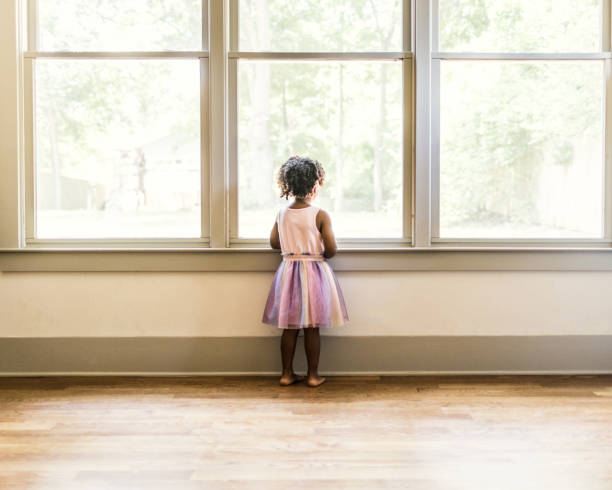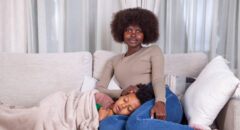
As the weather gets warmer, and families open their windows, they could unknowingly put young children at risk.
Windows are listed as one of the top five hidden home hazards by the U.S. Consumer Product Safety Commission, and an open window is one of the biggest springtime hazards to young children.
RELATED: Safety Lessons Every Parent Should Teach Their Child
Young children more likely to suffer severe injuries from window falls
“As far they are concerned, it’s just something else to explore,” says Dr. Alfred Sacchetti, spokesperson for the American College of Emergency Physicians, and Chief of Emergency Medicine at Our Lady of Lourdes Medical Center in Camden, New Jersey. “If it’s the window behind a couch, the child can easily climb up to the back of the couch, they lean on the screen, and out the window, they go.”
Becky Turpin, director of Home and Community Safety with the National Safety Council explains that some window falls occur because window screens cannot withstand a child pushing against it.
“I think a lot of parents think that screens keep kids in,” says Turpin. “It keeps the bugs out, but it really isn’t strong enough.”
There are harsh examples of this. A 3-year-old fell from a third-story window in New Jersey; a 2-year-old fell from a second-story window in Massachusetts; another 3-year-old fell from a second-story window in Chicago; and, a 2-year-old fell out of a second-floor window in New York City. Fortunately, all four children survived their falls.
But, not all are this lucky. While more than 3,000 children suffer injuries every year from falling out of windows, more than a handful of those falls are actually fatal.
“The accidental death of a child is overwhelmingly the saddest thing that we ever deal with,” says Sacchetti. “There’s no warning… next thing you know, they’re gone. It’s the most heartbreaking thing you’re ever going to deal with [as an emergency physician].”
Most children who fall from windows are 4 years of age or under. These young children are also more likely to sustain head injuries, be hospitalized or die from a fall compared to older children who fall, according to a 2011 study.
“Most devastating and most common is the head injury,” says Sacchetti. “Kids have big heads and that tends to be the part of their bodies that sustains the most damage. Their recovery from those is the most difficult.”
He adds that emergency physicians can see injuries ranging from minor sprains and broken bones to lung injuries or internal bleeding in children after window falls.
“Those kids who land in bushes, on gardens, or on grass tend not to be the ones that have the fatal injuries,” Turpin says. “The ones that are falling out of windows and landing on the sidewalk have more fatal outcomes.”
RELATED: Toppling TVs, Furniture Sending Many Young Children to ERs
How to protect your child
Yet, there is something parents and caretakers can do.
Window guards and window stops can prevent children from falling out of windows, says Turpin. Despite their availability at most hardware stores, when Safe Kids Worldwide surveyed parents, they found that 70 percent had never used window guards or stops before.
“It’s still an issue for some reason,” says Turpin. “The only way we’re going to work on this is to continue to talk about this with our families.”
Another safety issue involves the cords on blinds – about 1 child dies every month from window cord strangulation.
“The saddest thing I ever saw was a toddler who got the cord wrapped around their neck and asphyxiated,” says Sacchetti. “It was absolutely tragic.”
Follow these safety tips to prevent window tragedy:
- Keep all furniture – beds, sofas, dressers – or anything else children can climb on away from windows.
- Install ASTM-approved window guards that have a quick release in case of a fire emergency.
- Open windows only from the top if you have double-hung windows.
- If you must open windows from the bottom, use window stops, which keep windows from opening more than 4 inches.
- Lock all unopened windows and doors.
- Do not rely on screens to prevent falls.
- Do not forget to check windows when visiting friends or family.
- Cut blind cords short enough that they are out of a child’s reach
Sacchetti also suggests: “Periodically get down on your hands and knees and crawl around your living space or the daycare center and explore everything you can get your hands on. If you can climb up and get to a window, you have to make sure you make that window safe.”
 Dr. Tyeese L. Gaines is a physician-journalist with nearly 15 years of print, online and broadcast experience. She is a practicing emergency medicine physician based in New Jersey and owner/media strategist for Doctor Ty Media, LLC. Follow her on twitter at @doctorty.
Dr. Tyeese L. Gaines is a physician-journalist with nearly 15 years of print, online and broadcast experience. She is a practicing emergency medicine physician based in New Jersey and owner/media strategist for Doctor Ty Media, LLC. Follow her on twitter at @doctorty.








